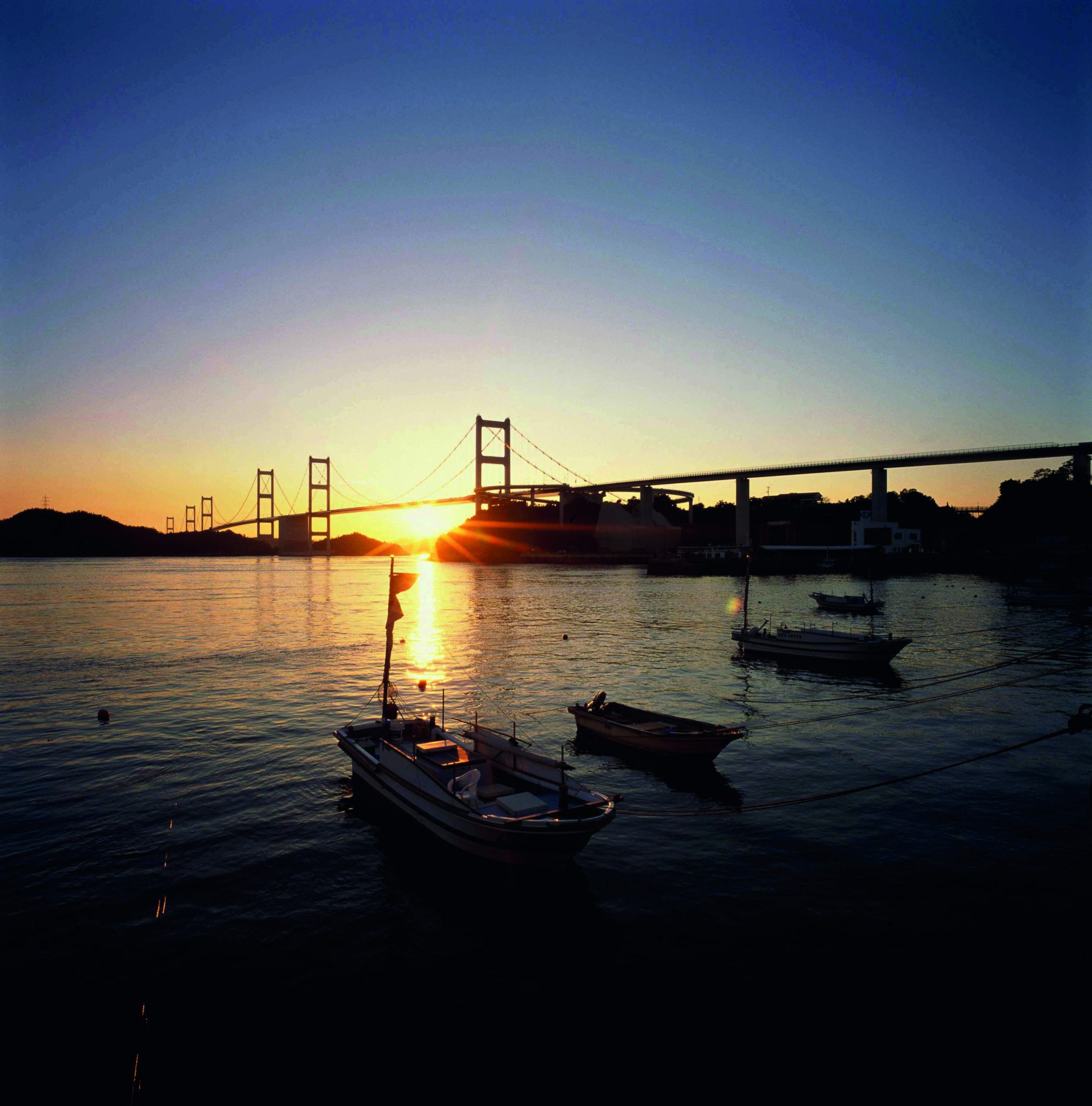CYCLING THE
SHIMANAMI KAIDO,
JAPAN
Experience the ultimate family adventure, crossing the world’s most
spectacular cycle route
words beverley d’silva
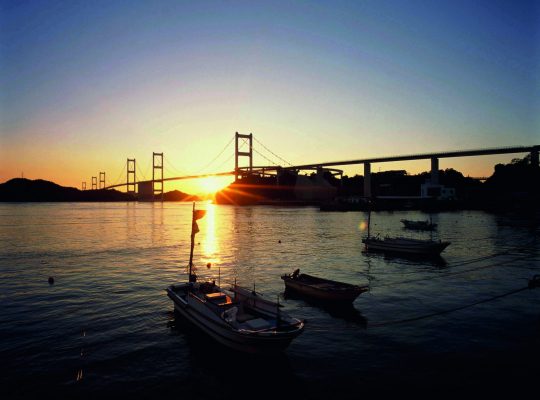
“I am cycling across a suspension bridge that stretches away into infinity. The view from this high spot is sublime: tiny boats float on the Seto Inland Sea below, green islands loom on the mist-speckled horizon and cherry blossom trees abound on the hills of Shikoku ahead.
Cycling the Shimanami Kaido in Japan is frequently rated one of the most spectacular cycling routes in the world. Its beauty is undisputed: it traverses islands of diverse character, wild and cultivated landscapes, tranquil temples and ancient castles. It’s even won its own Michelin star.
The real beauty of this incredible toll road is that it can be cycled in hours or over several
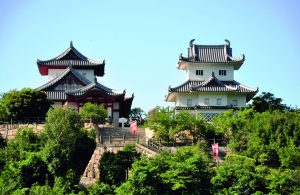
Sea Route, Shimanami Kaido Mt. Shirataki
Onomichi Seto;Innoshima Suigun Pirates Castle

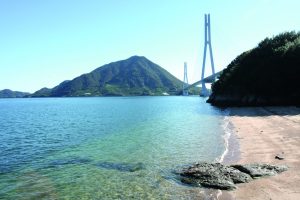
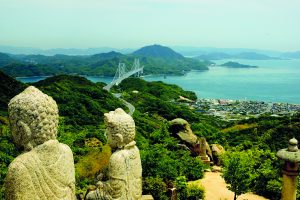
Cycling through the city;
Imabari City, Omishima
Island; Innoshima Island
days, depending on your skills, the route you choose and your need for speed or leisure. There’s something to suit everyone, from the young and beginners to experienced, intrepid cyclists.
The Shimanami Kaido – aka the Nishiseto Expressway – starts in Onomichi, in Hiroshima prefecture of Honshu, Japan’s main island. Travelling westwards it culminates in Shikoku island. Most cyclists hire bikes in Onomichi before hitting the road. And what a road. Built just 20 years ago, it’s modern, mostly level and a remarkable feat of engineering.
Consisting of a 70km cycle route with wide dedicated lanes for cyclists and pedestrians, the route typically runs alongside, while being separated from, car lanes, and diverts from the expressway so cyclists can take in the beauty of each island.
The first of these, reached by ferry from Onomichi, is Mukaishima. This island used to boast having people with the country’s longest life expectancy, an honour that now rests with Ochinawa. Next en route is Innoshima island, famous for its fishing and its pagoda shaped ancient Suigan Castle, home to navies from the 1600s.
The path passes spectacular coastal scenery and fragrant orange and lemon groves; at other times it joins to a regular
road with local traffic.
Bridges take you across to Innoshima, then Ikuchijima island, where the Kosan-ji shrine is sited. Built in the 1930s by a Buddhist priest in memory of his mother, its temples and pagodas are modelled on notable sacred buildings in Kyoto, Nikko and elsewhere. The landscaped gardens are divine.
The road winds via Omishima and Hakatjima islands, before it reaches Oshima. This, the largest of the Seto Sea islands, is home to Oyamazumi-jinja, a shrine where Samurai warriors went to pray for victory, and an impressive collection of Samurai-era weaponry. At the island’s western point, you will spy the route’s pièce de résistance – the iconic Kurushima Kaikyo Bridge. At 4,015 metres long, it is the longest suspension bridge structure in the world and a grand finale to the route, which finishes in Imabari on tranquil Shikoku.
Cycling the full route one way is 70km, which can be completed by experienced cyclists in four hours. Going at a more leisurely pace, taking in scenery and attractions, is estimated to take 10 hours. Those who don’t intend to cycle back can drop hire bikes in Imabari and return to Onomichi by bus or ferry, or by train to Hiroshima. The route is tolled for cars but free for cyclists and pedestrians.
While the Shimanami Kaido is perfect for cycling, you can of course also walk or jog along some or all of it. It plays host to an annual event, Cycling Shimanami; 7,000 took part last October, cycling between 40km and 140km, spanning seven courses. It is a fun ride event not a race, say the organisers.
The Seto Inland Sea is a stunning area of natural beauty and a wealth of cultural attractions, including the country’s best art galleries, such as Benesse House on Naoshima island. Onomichi, at the route’s start, is a quaint old town of cobble-stoned hills and a Temple Walk that includes Senkoji, one of the country’s most ancient temples. Shikoku, at its end, has some of the wildest, greenest, most unspoilt scenery in all of Japan.”


